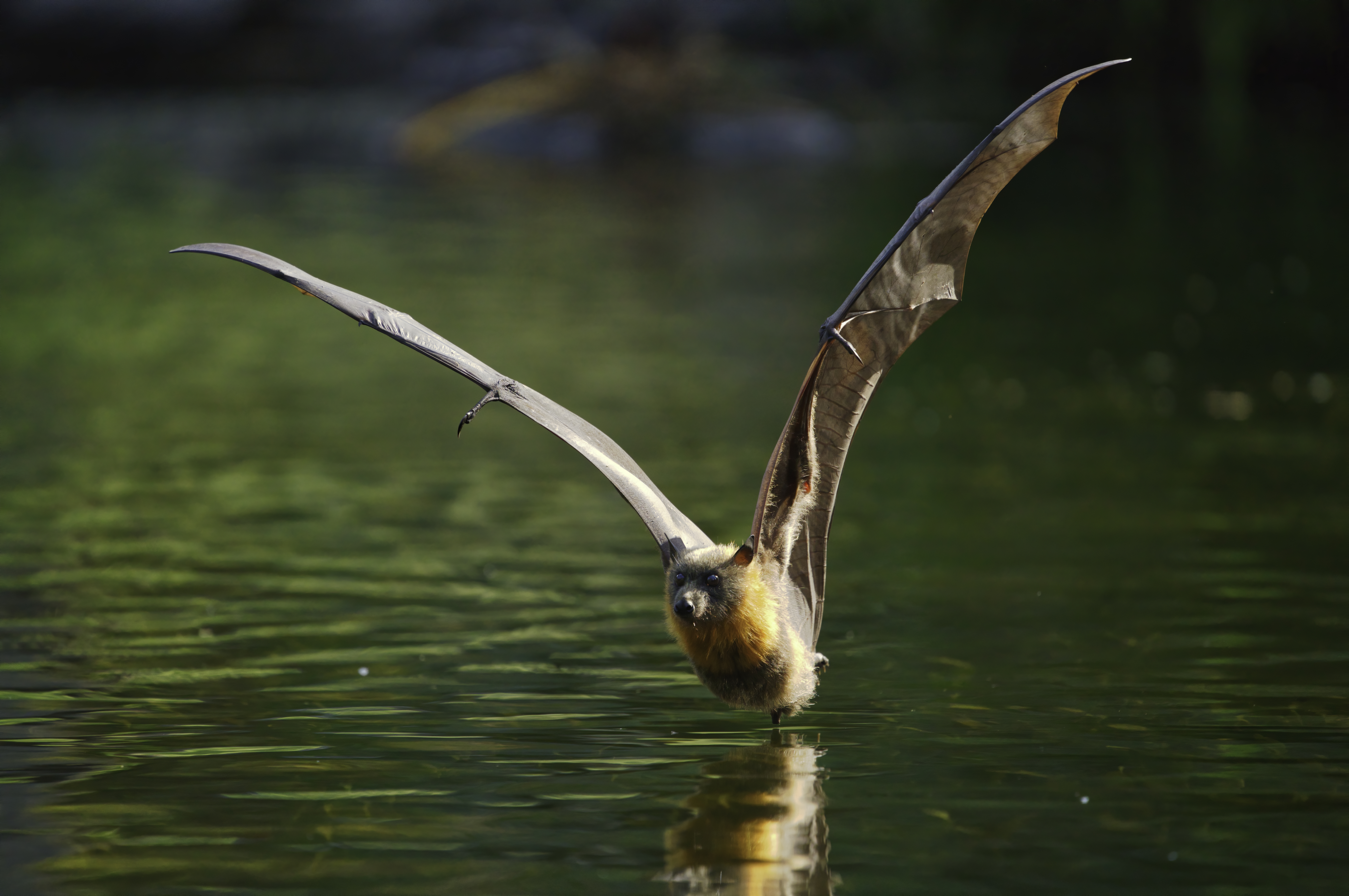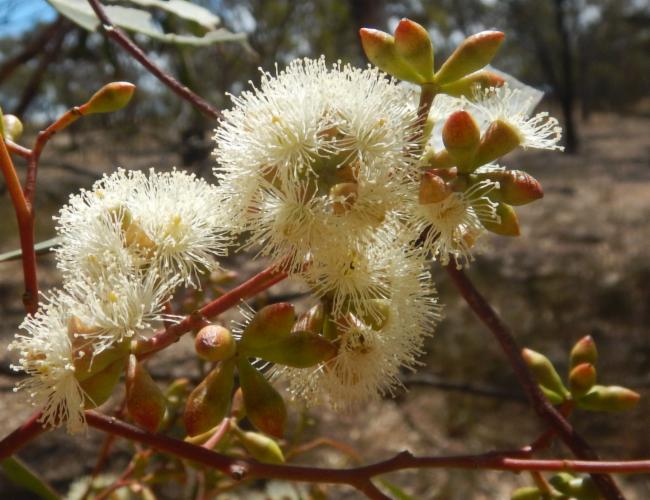|
Numurkah, Victoria
Numurkah ( ) is a town in Victoria, Australia, located on the Goulburn Valley Highway, north of Shepparton, in the Shire of Moira. At the , Numurkah had a population of 4,768. History The area was occupied by the Yorta Yorta people prior to European settlement. Squatters moved into the area from NSW in the late 1830s. After the pastoral runs were made available for farm selection, the township of Numurkah was surveyed in 1875, the Post Office opening 2 November 1878. The local railway station was opened on the Goulburn Valley railway in 1881, but has not seen any passenger services since 1993 when the train to Cobram was withdrawn. The station building remains in private ownership, and a footbridge crosses the line. Numurkah became the headquarters of the Murray Valley Soldier Settlement Area - one of the largest soldier settlements in Australia - after World War I. Under this scheme 700 ex-servicemen were given land to develop for agriculture. The name is thought to be d ... [...More Info...] [...Related Items...] OR: [Wikipedia] [Google] [Baidu] |
Electoral District Of Shepparton
The electoral district of Shepparton is a rural Lower House electoral district of the Victorian Parliament. It is located within the Northern Victoria Region of the Legislative Council. The electoral district of Shepparton covers an area of 3,289 square kilometres. Shepparton includes the country towns of Ardmona, Barmah, Congupna, Dookie, Katunga, Kialla, Mooroopna, Nathalia, Picola, Shepparton, Strathmerton, Tallygaroopna, Tatura and Toolamba. The district also includes the Barmah National Park. It is a rich agricultural area with orchards, vineyards and dairy farms. Much of the electorate is an important irrigation area served by water from the Main East Goulburn Channel. The rest of the land is used for pasture, fodder crops and cattle and sheep grazing. Shepparton was held by the National/Country Party from its creation in 1945 until 2014, although it was abolished for a twelve-year period between 1955 and 1967. The current member is National Kim O'Keeffe, who ... [...More Info...] [...Related Items...] OR: [Wikipedia] [Google] [Baidu] |
Numurkah Railway Station, Victoria
Numurkah is a closed railway station on the Goulburn Valley railway line in the town of Numurkah, Victoria, Australia. History The station opened as the terminus of the railway from Shepparton on 1 September 1881 The line was extended north to Strathmerton and Cobram in October 1888, as well as a short distance west to Nathalia. The latter line was extended to Picola in 1896, as the Picola line, with the junction located to the north of the station, at the down end. New station buildings were opened on 29 May 1969, and were refurbished in 1985. Passenger services beyond the station to Cobram were discontinued in 1981, as part of the New Deal timetable, but were resumed in 1983. The final closure was in 1993, when the Cobram service was cut back to Shepparton, as it is today. During August 1998, the interlocked frame and signal quadrants at Numurkah were abolished, along with all fixed signals, signal posts, main line points, a number of roads, including the road leading to ... [...More Info...] [...Related Items...] OR: [Wikipedia] [Google] [Baidu] |
Pteropus Poliocephalus
The grey-headed flying fox (''Pteropus poliocephalus'') is a megabat native to Australia. The species shares mainland Australia with three other members of the genus '' Pteropus'': the little red '' P. scapulatus'', spectacled '' P. conspicillatus'', and the black '' P. alecto''. The grey-headed flying fox is the largest bat in Australia. The grey-headed flying fox is endemic to the south-eastern forested areas of Australia, principally east of the Great Dividing Range. Its range extends approximately from Bundaberg in Queensland to Geelong in Victoria, with outlying colonies in Ingham and Finch Hatton in the north, and in Adelaide in the south. In the southern parts of its range it occupies more extreme latitudes than any other ''Pteropus'' species. As of 2021 the species is listed as "Vulnerable" on the IUCN Red List of Threatened Species. Taxonomy A description of the species was published by Coenraad Temminck in his 1825 monograph of mammals. Hybridisation with the ... [...More Info...] [...Related Items...] OR: [Wikipedia] [Google] [Baidu] |
Callitris Glaucophylla
''Callitris'' is a genus of coniferous trees in the Cupressaceae (cypress family). There are 16 recognized species in the genus, of which 13 are native to Australia and the other three (''C. neocaledonica, C. sulcata'' and ''C. pancheri'') native to New Caledonia. Traditionally, the most widely used common name is cypress-pine, a name shared by some species of the closely related genus ''Actinostrobus''.Eckenwalder, J.E. 2009. ''Conifers of the World: The Complete Reference''. Timber Press. p. 122-124 Description They are small to medium-sized trees or large shrubs, reaching tall (to in ''C. macleayana''). The leaves are evergreen and scale-like. But young seedlings have needle-like leaves; in ''C. macleayana'', needle-like leaves are found mixed with scale leaves throughout the tree's life. The scales are arranged in six rows along the twigs, in alternating whorls of three (often in whorls of four in ''C. macleayana''). The male cones are sm ... [...More Info...] [...Related Items...] OR: [Wikipedia] [Google] [Baidu] |
Eucalyptus Melliodora
''Eucalyptus melliodora'', commonly known as yellow box, honey box or yellow ironbark, is a species of medium-sized to occasionally tall tree that is endemic to south-eastern, continental Australia. It has rough, flaky or fibrous bark on part or all of the trunk, smooth greyish to yellowish bark above. The adult leaves are lance-shaped to egg-shaped, the flower buds are arranged in groups of seven and the fruit is more or less hemispherical. Description ''Eucalyptus melliodora'' is a tree that typically grows to a height of and forms a lignotuber. The bark is variable ranging from smooth with an irregular, short stocking, to covering most of the trunk, fibrous, dense or loosely held, grey, yellow or red-brown, occasionally very coarse, thick, dark brown to black. The smooth bark above is shed from the upper limbs to leave a smooth, white or yellowish surface. Young plants and coppice regrowth have lance-shaped to elliptic leaves that are long and wide and petiolate. Adult lea ... [...More Info...] [...Related Items...] OR: [Wikipedia] [Google] [Baidu] |
Eucalyptus Microcarpa
''Eucalyptus microcarpa'', commonly known as grey box, is a species of tree that is endemic to southeastern continental Australia. It has rough, fibrous or flaky bark on the trunk, smooth whitish bark above, lance-shaped adult leaves, flower buds in groups of between seven and eleven, white flowers and oval, cylindrical or urn-shaped fruit. Description ''Eucalyptus microcarpa'' is a spreading tree, sometimes with several trunks, that typically grows to a height of and forms a lignotuber. It has rough, fibrous or flaky bark on the trunk as far as the larger branches, smooth greyish or whitish bark above. Young plants and coppice regrowth have dull green to bluish leaves long and wide and petiolate. Adult leaves are the same shade of green on both sides, lance-shaped, long and wide on a petiole long. The flower buds are arranged on a branched peduncle, in groups of between seven and eleven, the peduncle long, the individual buds on pedicels long. Mature buds are oval to ... [...More Info...] [...Related Items...] OR: [Wikipedia] [Google] [Baidu] |
Eucalyptus Camaldulensis
''Eucalyptus camaldulensis'', commonly known as the river red gum, is a tree that is endemic to Australia. It has smooth white or cream-coloured bark, lance-shaped or curved adult leaves, flower buds in groups of seven or nine, white flowers and hemispherical fruit with the valves extending beyond the rim. A familiar and iconic tree, it is seen along many watercourses across inland Australia, providing shade in the extreme temperatures of central Australia. Description ''Eucalyptus camaldulensis'' is a tree that typically grows to a height of but sometimes to and often does not develop a lignotuber. The bark is smooth white or cream-coloured with patches of yellow, pink or brown. There are often loose, rough slabs of bark near the base. The juvenile leaves are lance-shaped, long and wide. Adult leaves are lance-shaped to curved, the same dull green or greyish green colour on both sides, long and wide on a petiole long. The flower buds are arranged in groups of seve ... [...More Info...] [...Related Items...] OR: [Wikipedia] [Google] [Baidu] |
Barmah, Victoria
Barmah is a town in the state of Victoria, Australia. Barmah has the distinction of being located north of the border with the state of New South Wales. New South Wales is north of Victoria, with the border being the westward-flowing Murray River. However, just downstream of Barmah the Murray winds to the south and east for a short distance before resuming its westward course. The land within this length of river results in a small part of New South Wales being to the south of the Victorian town. Barmah is near the largest river red gum forest in the world. The Barmah National Park is on the floodplain of the Murray River, and when it floods is an important breeding ground for Murray cod. The flood is enhanced by the geological features of the riverbed, as the channel narrows at an area known as the ''Barmah choke''. The Barmah Forest is listed under the Ramsar Convention for wetlands and, with various state forests in New South Wales, has been identified as an Importa ... [...More Info...] [...Related Items...] OR: [Wikipedia] [Google] [Baidu] |
Murray River
The Murray River (in South Australia: River Murray) ( Ngarrindjeri: ''Millewa'', Yorta Yorta: ''Tongala'') is a river in Southeastern Australia. It is Australia's longest river at extent. Its tributaries include five of the next six longest rivers of Australia (the Murrumbidgee, Darling, Lachlan, Warrego and Paroo Rivers). Together with that of the Murray, the catchments of these rivers form the Murray–Darling basin, which covers about one-seventh the area of Australia. It is widely considered Australia's most important irrigated region. The Murray rises in the Australian Alps, draining the western side of Australia's highest mountains, then meanders northwest across Australia's inland plains, forming the border between the states of New South Wales and Victoria as it flows into South Australia. From an east–west direction it turns south at Morgan for its final , reaching the eastern edge of Lake Alexandrina, which fluctuates in salinity. The water then flow ... [...More Info...] [...Related Items...] OR: [Wikipedia] [Google] [Baidu] |
Broken Creek
Broken Creek is a creek in northern Victoria, Australia. The creek diverges from Broken River immediately downstream from the former Lake Mokoan (now decommissioned) near Benalla and flows in a north-west direction. The creek passes through the towns of Numurkah and Nathalia before entering the Murray River upstream from Barmah Barmah is a town in the state of Victoria, Australia. Barmah has the distinction of being located north of the border with the state of New South Wales. New South Wales is north of Victoria, with the border being the westward-flowing Murray .... References Rivers of Victoria (Australia) Goulburn Broken catchment Rivers of Hume (region) Tributaries of the Murray River {{VictoriaAU-river-stub ... [...More Info...] [...Related Items...] OR: [Wikipedia] [Google] [Baidu] |
Murray Football League
The Murray Football Netball League is an Australian rules football and netball league affiliated with the Victorian Country Football League. The league covers a large area of northern Victoria and southern New South Wales from Shepparton in the south to Deniliquin in the north. It covers much the same area as the Picola & District Football League but the teams tend to be the larger communities and towns. History The "Murray Football League" (MFL) was established in 1931, when it superseded the old Goulburn Valley Football Association, with the following clubs, Barooga, Cobram, Numurkah, Strathmerton and Tocumwal. Nathalia Football Club's admission into the MFL was initially rejected in 1931 by club delegates and they entered the Western and Moira Ridings Football Association. Berrigan, Finley and Nathalia's application for admission into the MFL in 1932 was rejected and they continued to play in their existing competitions. These three clubs were finally admitted in ... [...More Info...] [...Related Items...] OR: [Wikipedia] [Google] [Baidu] |
Australian Rules Football
Australian football, also called Australian rules football or Aussie rules, or more simply football or footy, is a contact sport played between two teams of 18 players on an oval field, often a modified cricket ground. Points are scored by kicking the oval ball between the central goal posts (worth six points), or between a central and outer post (worth one point, otherwise known as a "behind"). During general play, players may position themselves anywhere on the field and use any part of their bodies to move the ball. The primary methods are kicking, handballing and running with the ball. There are rules on how the ball can be handled; for example, players running with the ball must intermittently bounce or touch it on the ground. Throwing the ball is not allowed, and players must not get caught holding the ball. A distinctive feature of the game is the mark, where players anywhere on the field who catch the ball from a kick (with specific conditions) are awarded unim ... [...More Info...] [...Related Items...] OR: [Wikipedia] [Google] [Baidu] |




